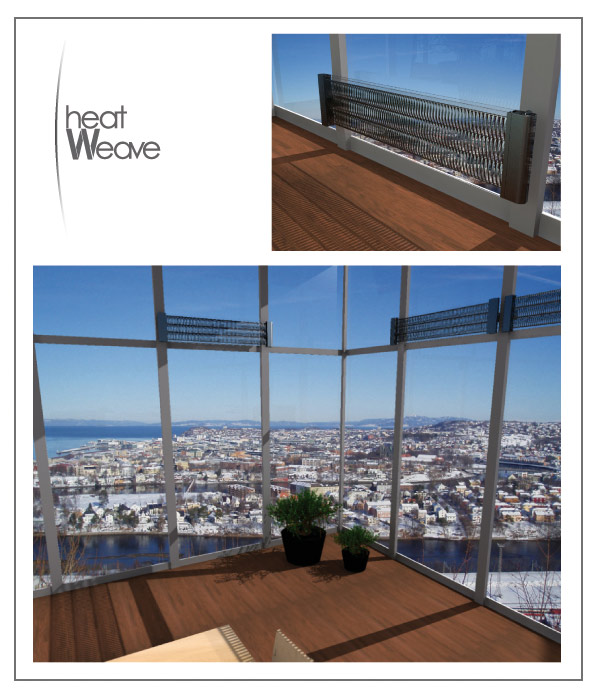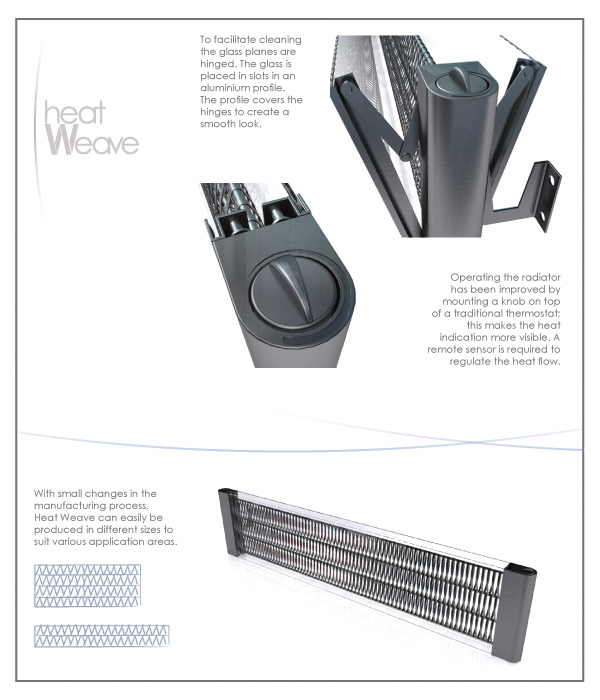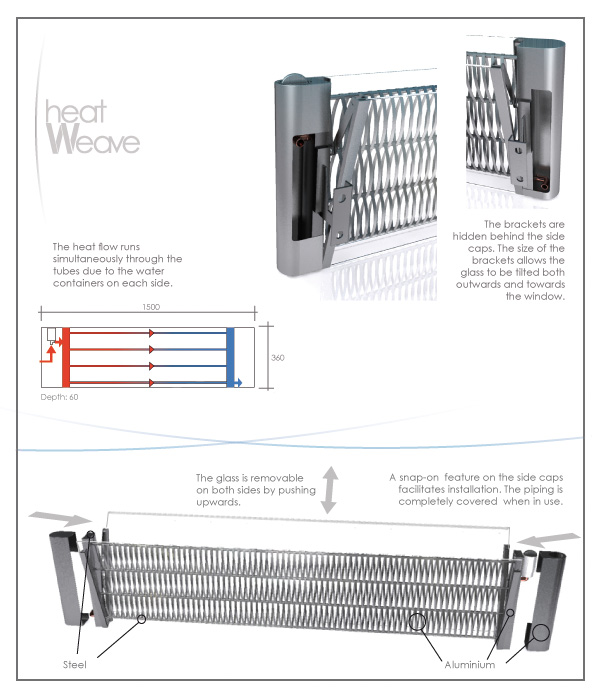
heat weave by caroline lauvsnes oren from norway
designer's own words:
Modern buildings today have been using large window areas to create open spaces but cause cold downdraft. The Heat Weave deals with this problem, as it can be placed in front of the window; either close to the floor or higher up on the window. In addition to this the “radical” innovation in the Heat Weave is the use of fins and metal textile. Heat weave heats the air as it passes through the textile. The chimney effect caused by the glass on both sides of the textile also enhances the heating of the air flow (convection). When preventing cold waves little radiance is needed. However, there will be some radiation through the glass. The Heat Weave can either be floor standing or mounted using brackets. The floor standing version is mounted to a fixed base and requires small changes to the piping.
Metal textile, manufactured by GKD in Germany, is an exciting material mostly used in architecture. The textile can be woven in different patterns and fibre optics can be implemented, allowing customization.
All the parts containing water are made of steel to avoid corrosion, whilst the fins are made from aluminium, due to its high thermal coefficient. The steel tubes that carry hot water are woven into the textile, providing maximum surface contact and heat transfer.
While the shape of the radiator is classical, the metal textile creates an innovative look. When the radiator is placed high above floor level it also generates decorative shadows and reflections. The shape and material of the side caps are inspired by the metal textile, avoiding hard edges creating a friendly look. Cleaning the radiator is easily performed by tilting the glass surface outwards.
The radiator consists only of a few parts and the materials and manufacturing techniques are familiar to Bisque. The glass and metal textile can be supplied by vendors.
Heat Weave
 Details
Details
 Technical Explanation
Technical Explanation